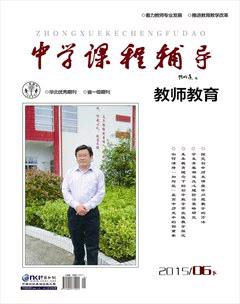The Communicative Approach to Language Teaching
2015-07-07杨彩娟
杨彩娟
摘 要:As the English language develops and the social demand for language talents changes,one's language competence shifts from his or
herlinguistic competence to the communicative competence.Therefore,the traditional teacher-centered and memory-based teaching method which focuses on grammatical properties will inevitably be replaced gradually by CLT-Communicative Language Teaching method which pays more attention on students' communicative competence.
關键词:English language teaching;Grammar Translation Method (GTM);Communicative Language Teaching method (CLT)
中图分类号:G633.41 文献标识码: A 文章编号:1992-7711(2015)12-004-01
Under the unified Chinese education system, teacher-centered teaching method which has rare interactions or communications between each other has long dominated various Chinese classes. The teaching emphasizes the students understanding and memorization of linguistic knowledge. As a result of the language development, English language teaching is taking on a new character—— the Communicative Approach, which is a shift of the focus of attention from the grammatical to the communicative properties of language.
Sociologist Hymes put forward that ones language competence should be weighed by four aspects:1) possibility; 2) feasibility; 3) appropriateness; 4) performance . In other words, ones language competence should be his communicative competence. In this situation, the oral inductive methods of the conventional syllabus are no longer adequate. There is a need for a new approach to language teaching which shift the focus of attention from the grammatical to the communicative properties of language. So CLT—— Communicative Language Teaching appeared.
CLT, a popular dominant method of teaching in Europe , has been beginning to change the teachers role in the classroom in China. It is an approach that aims to make communicative competence the goal of language teaching. As a teacher of English in China , we must experience a hard time in the transition of the teachers role in the classroom from that of the Grammar Translation Method (GTM) to that of CLT. Because he traditional language teaching had taken firm root in China through so many decades that it was unimaginably difficult to get it extracted from the teachers minds, even slightly. Now , the most widely accepted view of learning in China is still memory——based. For many students and teachers, books are thought of as an embodiment of knowledge, wisdom, and truth. That is to say knowledge is “in the books” and in order to acquire it , it is sufficient to commit it to memory. Taking an intensive reading class as an example , the teacher ,using this non-meaningful approach, explains every point of vocabulary, syntax, style and context of the text, word by word, phrase by phrase, and the students are kept busy with their pens taking notes.
It was under such a dominant teaching-and-learning paradigm that we began trying CLT in China. This inevitably caused other changes in language teaching, such as changes in syllabus construction, course-books design, classroom methods, goals for teaching programs and ,of course, in the teacher-student relationship.
